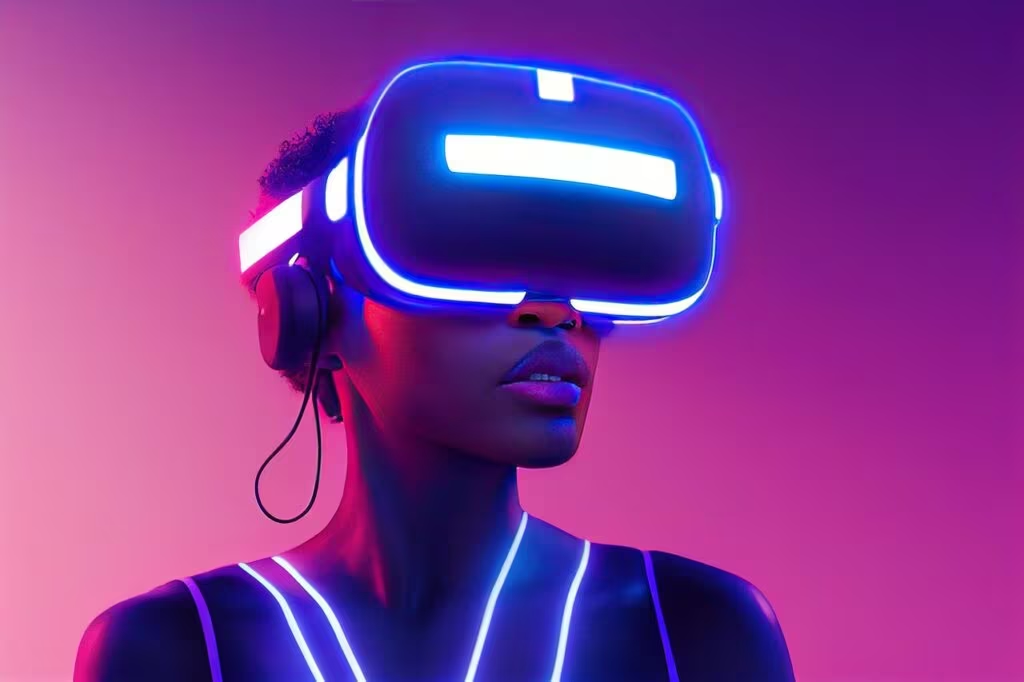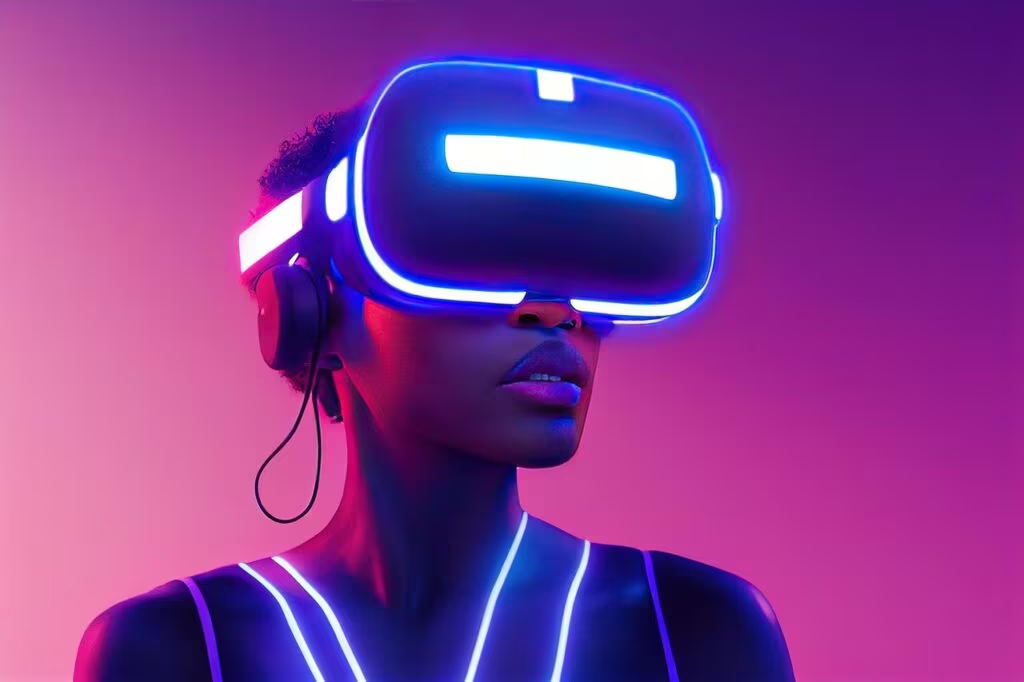Google and Magic Leap Showcase Next-Generation AR Glasses Prototype
In a significant move signaling Google’s commitment to the lightweight augmented reality (AR) form factor, the company has officially showcased a prototype of its Android XR glasses. This reveal comes as part of an extended partnership with spatial computing pioneer Magic Leap, highlighting a strategic focus on discreet, wearable AR technology.
The demonstration, which surfaced in October 2025 following the recent market entry of bulkier extended reality (XR) headsets like the Samsung Galaxy XR, confirms that Google is pursuing a distinct path. While headsets prioritize immersive virtual reality (VR) and mixed reality (MR), these glasses are designed for everyday wear and seamless integration of digital information into the real world.
This development is crucial for the burgeoning Android XR ecosystem, positioning Google to compete directly in the rapidly evolving spatial computing market.
The Prototype: A Focus on Wearability and Design
The prototype glasses, while still in the development phase, emphasize a sleek and relatively conventional glasses design, a stark contrast to the visor-like appearance of many current XR headsets. This design choice underscores the ambition to create a device that users are comfortable wearing for extended periods.
Crucially, the prototype is built on the Android XR platform, Google’s operating system tailored for spatial computing devices. This integration ensures that the glasses will benefit from the vast ecosystem of Android developers and services, potentially accelerating content creation and adoption.

Form Factor Differentiation
The timing of this announcement is strategic. The market is currently seeing a clear division in XR hardware:
- Headsets (e.g., Samsung Galaxy XR, Apple Vision Pro): Designed for high-fidelity immersion, complex tasks, and entertainment. They often require external battery packs and are generally heavier.
- Glasses (Google/Magic Leap Prototype): Designed for ambient computing, notifications, navigation, and lightweight AR overlays. The primary goal is discreet, all-day wearability.
Google’s decision to prioritize the glasses form factor suggests a belief that the long-term future of AR lies in devices that blend invisibly into daily life, rather than those that require dedicated usage sessions.
The Strategic Importance of the Magic Leap Partnership
Google’s reliance on Magic Leap is not accidental. Magic Leap is renowned for its deep expertise in waveguide optics and spatial computing hardware, technologies critical for achieving high-quality AR visuals in a compact, glasses-sized frame.
The original partnership, which centered on licensing and technology sharing, has now been extended, solidifying the relationship and ensuring Magic Leap’s hardware expertise is leveraged to realize Google’s Android XR vision for glasses.
This collaboration provides Google with a significant advantage in the hardware race, allowing them to bypass years of internal research and development in specialized AR optics and miniaturization. For Magic Leap, the deal provides crucial validation and access to the massive scale of the Android ecosystem.
“The extended collaboration with Magic Leap is fundamental to delivering a truly seamless and powerful spatial computing experience in a lightweight form factor,” a source close to the project stated, emphasizing the reliance on Magic Leap’s proprietary optical technology.
Key Contributions of Magic Leap
Magic Leap’s involvement is expected to contribute heavily to several critical areas of the prototype:
- Miniaturization: Achieving high-density displays and projection systems within the thin frame of standard glasses.
- Optics: Utilizing advanced waveguide technology to project images onto the lenses while maintaining clear visibility of the real world.
- Spatial Mapping: Leveraging Magic Leap’s robust understanding of environmental tracking and persistent digital content placement.

Contextualizing Android XR in the 2025 Market
The introduction of a dedicated glasses prototype is a crucial step for the Android XR platform. While Google has been developing the software stack, the success of the platform hinges on compelling hardware that can compete with established players.
The Competition Landscape
- Apple VisionOS: Apple continues to dominate the high-end, immersive headset market with its VisionOS platform, setting a high bar for fidelity and integration within the Apple ecosystem.
- Meta Quest/Horizon OS: Meta focuses on social VR and consumer-grade mixed reality, primarily through its Quest line, which utilizes a dedicated operating system.
- Samsung Galaxy XR: The recent debut of Samsung’s headset solidified the Android XR presence in the immersive category, but the platform needed a clear answer for the AR glasses segment.
Google’s prototype fills this gap, ensuring that Android XR can support both immersive headsets and lightweight AR glasses, offering developers a unified platform regardless of the device form factor.
This strategy mirrors the early days of Android, where the operating system was designed to run on diverse hardware, from low-end phones to high-end tablets, maximizing market penetration.

Implications for the Future of Wearable Computing
The move toward lightweight AR glasses represents a fundamental shift in how consumers will interact with technology. If Google and Magic Leap can successfully deliver a product that is comfortable, powerful, and aesthetically pleasing, the implications are vast.
Potential Impact Areas:
- Workplace Productivity: Hands-free access to data, instructions, and communication overlays for field workers, medical professionals, and logistics staff.
- Navigation and Information: Real-time directions, language translation, and contextual information displayed directly in the user’s line of sight without needing to look down at a phone.
- Ambient Computing: The glasses could become the primary interface for Google Assistant and other AI services, providing proactive information based on the user’s location and environment.
The prototype suggests that Google is prioritizing the utility of AR over the spectacle of VR. The goal is to make computing disappear into the background, enhancing reality rather than replacing it.
Key Takeaways
This prototype reveal and partnership extension are critical milestones for Google’s long-term hardware strategy. Here are the essential points for the reader:
- Prototype Confirmed: Google showcased a prototype of Android XR glasses in October 2025, confirming its focus on the lightweight AR form factor.
- Magic Leap Extended: The partnership with Magic Leap was extended, leveraging their expertise in advanced optics and miniaturization crucial for glasses design.
- Android XR Expansion: The glasses will run on the Android XR platform, ensuring ecosystem compatibility across both headsets and glasses.
- Market Strategy: Google is pursuing a dual-pronged strategy, supporting both the immersive headsets (via partners like Samsung) and the discreet, all-day glasses form factor.
- Future Focus: This move signals that Google views lightweight, ambient AR glasses as the ultimate evolution of wearable computing, moving beyond the phone screen.
Conclusion
Google’s decision to publicly display its Android XR glasses prototype, backed by the specialized hardware knowledge of Magic Leap, provides a clear view of its spatial computing ambitions. Unlike competitors who focused first on high-fidelity, high-cost headsets, Google is making an early and decisive bet on the future of everyday AR through a discreet glasses form factor.
This strategy ensures that as the Android XR ecosystem matures, it will be equipped to handle the full spectrum of extended reality devices, from the powerful, room-scale headset to the subtle, always-on smart glasses. The race to define the next generation of personal computing is now firmly focused on wearability, and Google has just shown its hand.
Original author: Ben Schoon
Originally published: October 30, 2025
Editorial note: Our team reviewed and enhanced this coverage with AI-assisted tools and human editing to add helpful context while preserving verified facts and quotations from the original source.
We encourage you to consult the publisher above for the complete report and to reach out if you spot inaccuracies or compliance concerns.
![Google shows off prototype Android XR glasses from extended Magic Leap deal [Video] - 9to5Google](https://www.3cdn.net/wp-content/compressx-nextgen/uploads/2025/10/google-android-xr-glasses-magic-leap-presentation-1.jpg.avif)
